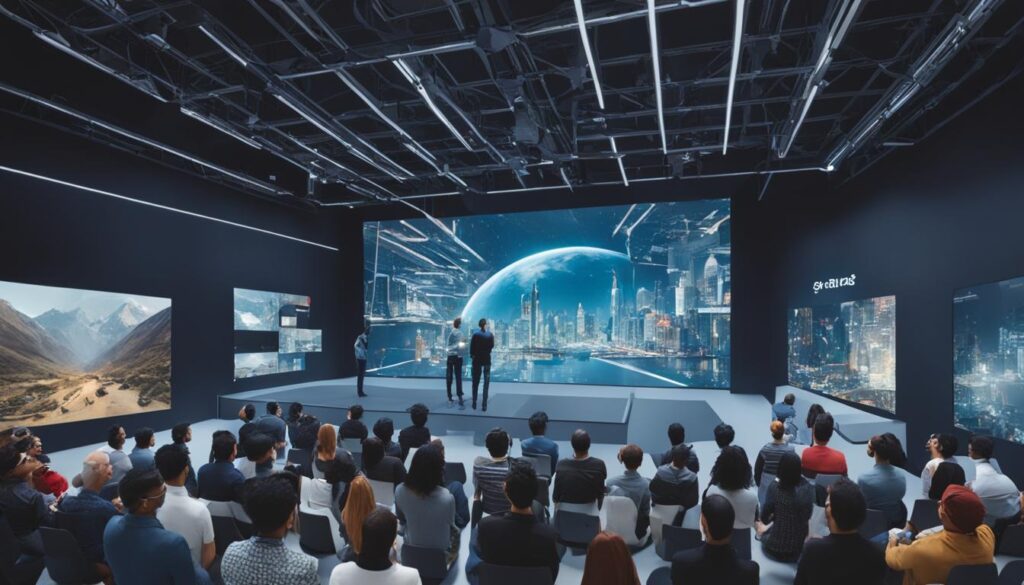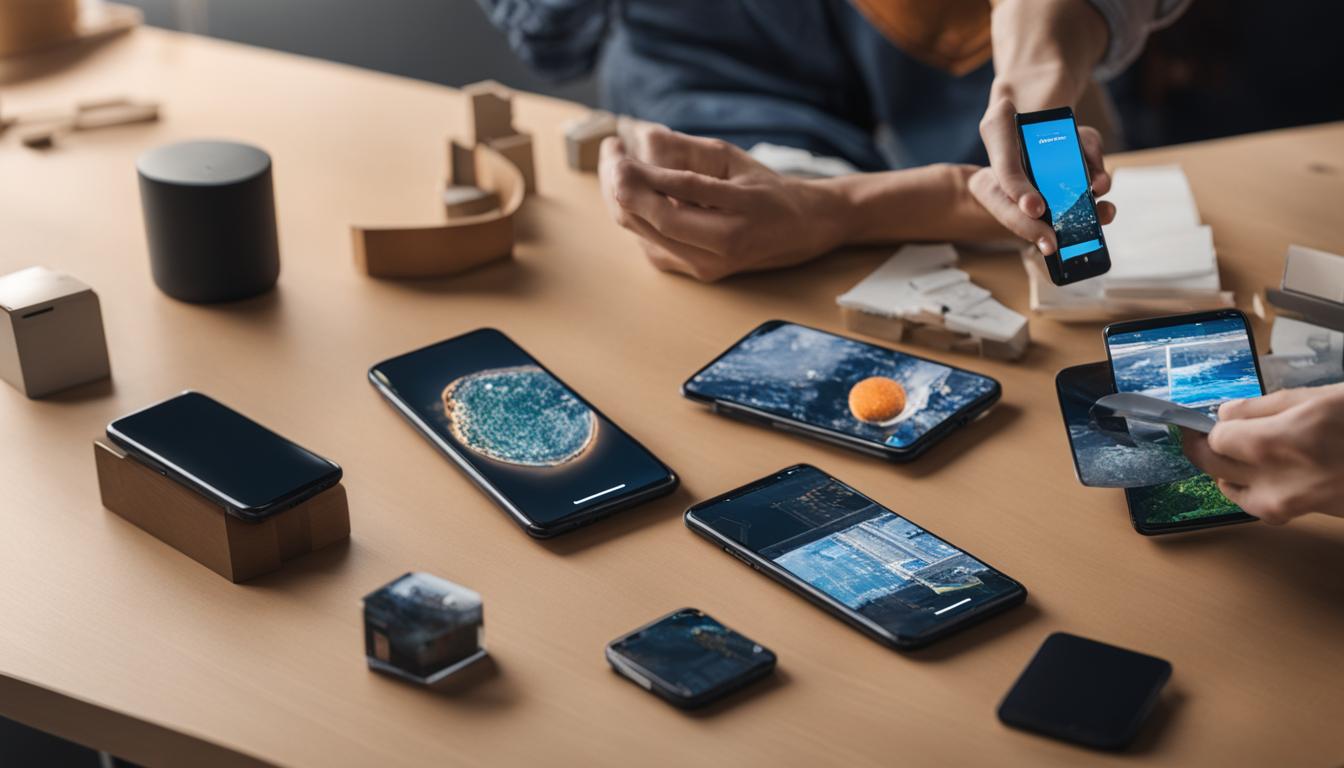Augmented reality (AR) is an exciting technology that is revolutionizing the way we interact with digital content. By overlaying virtual elements onto the real world, AR creates immersive and interactive experiences. One way to enhance these experiences is by incorporating 3D models into augmented reality, bringing virtual objects to life in a realistic and engaging way.
In this guide, you will learn how to add 3D models into augmented reality and seamlessly integrate them into your AR experiences. We will walk you through the step-by-step process of incorporating 3D models, provide valuable tips and best practices for AR 3D model implementation, and make the process of adding 3D models into augmented reality simple and easy.
Contents
- 1 The Role of Content in Augmented Reality
- 2 Creating 3D Models for Augmented Reality
- 3 Conclusion
- 4 FAQ
- 4.1 What is augmented reality content?
- 4.2 Why is high-quality AR content important?
- 4.3 How can I create 3D models for augmented reality?
- 4.4 What are the best practices for optimizing 3D models for AR?
- 4.5 How do I add 3D models to my AR experience?
- 4.6 What are the best practices for incorporating 3D models in AR?
- 4.7 What is the future of augmented reality content creation?
- 5 Source Links
Key Takeaways:
- Adding 3D models to augmented reality can enhance the visual appeal and engagement of AR experiences.
- Integrating 3D models into AR requires following a step-by-step process and considering best practices.
- Optimizing 3D models for AR, such as reducing file size and selecting the appropriate file format, is essential for smooth AR display.
- Uploading 3D models to the AR platform, linking them to other content, and adding animation can elevate the AR experience.
- Considering industry standards and utilizing AR content creation tools can facilitate the process of incorporating 3D models in AR.
The Role of Content in Augmented Reality
In order to create a compelling augmented reality experience, high-quality and engaging AR content is essential. AR content can come in various formats, including 3D models, visuals, videos, and audio. The content needs to be realistic, spatial, and immersive in order to provide an engaging user experience.
Companies must see AR content as a critical component of their long-term digital strategies to ensure app longevity. However, creating and delivering fresh, contextual, and personalized AR content can be challenging due to high production costs and a scarcity of skilled professionals in the industry.
Creating high-quality AR content requires careful attention to detail and a deep understanding of user expectations. Here are some key considerations to keep in mind:
- Utilize 3D models in AR: Incorporating 3D models adds depth, realism, and interactivity to the AR experience. These models can bring virtual objects to life and enhance the overall immersion for users.
- Create spatial content: Spatial content takes into account the physical environment in which the AR experience takes place. By designing content that interacts with and conforms to the user’s surroundings, you can create a more seamless and believable AR experience.
- Create engaging AR content: To captivate users, AR content should be visually appealing, interactive, and dynamic. Adding animation, interactive elements, and gamification can enhance engagement and make the experience more memorable.
- Ensure high-quality visuals: High-resolution textures, realistic lighting, and smooth rendering are crucial for creating a visually stunning AR experience. Paying attention to these details can greatly enhance user immersion and satisfaction.
“AR content has the power to transport users into a new reality, blending the virtual and physical worlds seamlessly. By leveraging the potential of 3D models, spatial features, and engaging visuals, companies can create unforgettable AR experiences that leave a lasting impact.” – [Your Name], AR Content Specialist
By focusing on creating high-quality and engaging AR content, companies can deliver memorable experiences that keep users coming back for more. Despite the challenges, investing in AR content production is a worthwhile endeavor, as it can deepen user engagement, boost brand awareness, and set your app apart in a crowded market.
Creating 3D Models for Augmented Reality
When it comes to incorporating 3D models into augmented reality, there are two primary methods: 3D modeling and 3D scanning. Let’s explore these approaches and the tools available for creating stunning 3D models that bring your AR experiences to life.
- 3D Modeling: Using computer graphics, 3D modeling allows you to create virtual representations of objects or surfaces. This method is highly versatile and enables you to design and shape 3D models from scratch using 3D design applications and CAD software.
- 3D Scanning: Alternatively, 3D scanning involves capturing real-world objects or scenes through techniques like photogrammetry or 3D scanner devices. This method is ideal when you want to recreate existing physical objects in the digital realm.
Both approaches have their advantages, and the choice depends on factors like the availability of the physical object you want to scan. To assist you in creating 3D models, there is a wide range of tools and applications available, including CAD software, computer graphics tools, and popular 3D model formats.

The Road Ahead
The future of AR content creation is bright and promising. With a growing interest in AR and its potential applications in various industries, we can expect to see continued innovation in tools, platforms, and techniques.
As more companies and individuals embrace AR technology, there will be a greater demand for user-friendly content creation solutions. This will drive further advancements in AR development tools, making it easier for creators to bring their ideas to life.
The future of AR content creation is an exciting journey full of possibilities. By staying updated on the latest trends, leveraging interoperability, adopting a user-centric approach, and embracing technological advancements, content creators can shape the future of AR and deliver impactful experiences to users around the world.
Conclusion
In conclusion, incorporating 3D models into augmented reality can significantly enhance the visual appeal and engagement of AR experiences. By following best practices and using the right tools, you can create high-quality and immersive AR content that captivates your audience.
Optimizing your 3D models for AR is crucial to ensure smooth performance and a seamless user experience. By reducing file sizes, compressing textures, and selecting the appropriate file formats, you can enhance the loading speed and overall performance of your AR application.
Adding 3D models to your AR experience allows you to create dynamic and interactive content. By linking your models to other media, such as videos and websites, and adding animation and texture, you can create a truly captivating AR experience.
As technology continues to advance, the future of augmented reality content creation looks promising. Trends such as interoperability and a user-centric approach will shape the way AR content is created and consumed. By staying up to date with these trends and leveraging innovative tools and platforms, you can ensure that your AR content remains relevant and valuable in the ever-evolving world of augmented reality.
FAQ
What is augmented reality content?
Augmented reality (AR) content refers to digital content that is overlaid onto the real world, creating an interactive and immersive experience. This content can include 3D models, visuals, videos, and audio.
Why is high-quality AR content important?
High-quality AR content is essential to create engaging and visually impressive augmented reality experiences. It helps to provide a realistic, spatial, and immersive user experience, ultimately enhancing user engagement and satisfaction.
How can I create 3D models for augmented reality?
There are two common methods for creating 3D models for augmented reality: 3D modeling and 3D scanning. 3D modeling involves using computer graphics tools to create a virtual representation of an object or surface, while 3D scanning captures real-world objects and scenes using techniques like photogrammetry or 3D scanners.
What are the best practices for optimizing 3D models for AR?
To optimize 3D models for augmented reality, you can reduce the file size and complexity of the models. This can be done by reducing the size of texture image files, decreasing the number of vertices in the model, and selecting the appropriate file format. Compressing textures, decimating meshes, and scaling the model are also effective techniques.
How do I add 3D models to my AR experience?
Adding 3D models to your AR experience involves uploading the models to the AR platform and converting the file formats if necessary. Once uploaded, you can link the 3D models to other content such as videos, websites, or social media pages. You can also add animation and texture to enhance the visual appeal of the models.
What are the best practices for incorporating 3D models in AR?
When incorporating 3D models into AR, it is important to follow best practices. Consider using accessible AR content creation tools, industry standards for AR content, and intuitive and code-free alternatives. Platforms like Apple’s Reality Kit 2 offer easy-to-use features that simplify the creation of 3D models for AR.
What is the future of augmented reality content creation?
The future of augmented reality content creation is full of exciting possibilities. Trends include a focus on interoperability, allowing AR experiences to work across different platforms and devices. Coding apps once and deploying them on multiple devices and operating systems is also becoming increasingly important. A user-centric approach and the delivery of meaningful experiences are key factors in the evolution of AR content creation.




